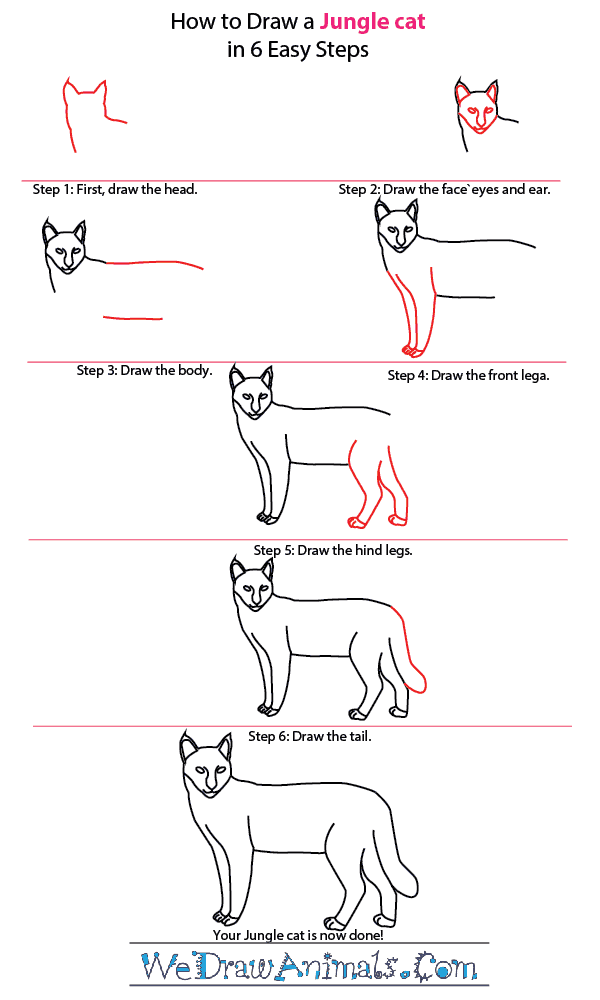In this quick tutorial you'll learn how to draw a Jungle Cat in 6 easy steps - great for kids and novice artists.
The images above represent how your finished drawing is going to look and the steps involved.
Below are the individual steps - you can click on each one for a High Resolution printable PDF version.
At the bottom you can read some interesting facts about the Jungle Cat.
Make sure you also check out any of the hundreds of drawing tutorials grouped by category.
How to Draw a Jungle Cat - Step-by-Step Tutorial
Step 1: Start by drawing the outline of the head, being sure to add the peaks for the ears.
Step 2: Draw the jawline and the face. Add two circles for the eyes and a wide "V" shape for the mouth.
Step 3: From the base of the neck draw a straight line with a slight curve toward the end of this. Just beneath this add a straight line for the belly.
Step 4: Now draw the forelegs, two slightly curved column shapes. Be sure to add the paws at the end of the legs!
Step 5: Now draw the hind legs. Hind legs are curved for the extra muscle the jungle cat has back there to propel it when it climbs trees!
Step 6: Looking good. Now draw a long, thick tail that falls along the hind legs. Make it rounded at the end!
Interesting Facts about the JUNGLE CAT
The Jungle Cat is a member of the feline family and the scientific term for them is Felis chaus. They are the largest of the Felis species. Another common name for this animal is the Jungle Lynx. The animal has a medium size for a cat, and they are native to southern Asia and northeast Africa. This feline is speckled with light brownish grey fur, has large ears, a short tail, and a spinal crest.
Did you know?
- This species can be over 4 feet long.
- They have a height of over 1 foot tall.
- The animal can weigh over 35 pounds.
- This species has hair on the end of their ears as long as 1 inch.
- They can have a paw print over 2 inches wide.
- This animal can live as high as 8,000 feet.
Their size varies depending on the geographical area in which they live, being larger toward the northern regions. The hands and feet have the same sized claws, which makes it as easy to climb up trees as it is for going down them. They live in most types of habitats and eat most animals compatible with their size.







